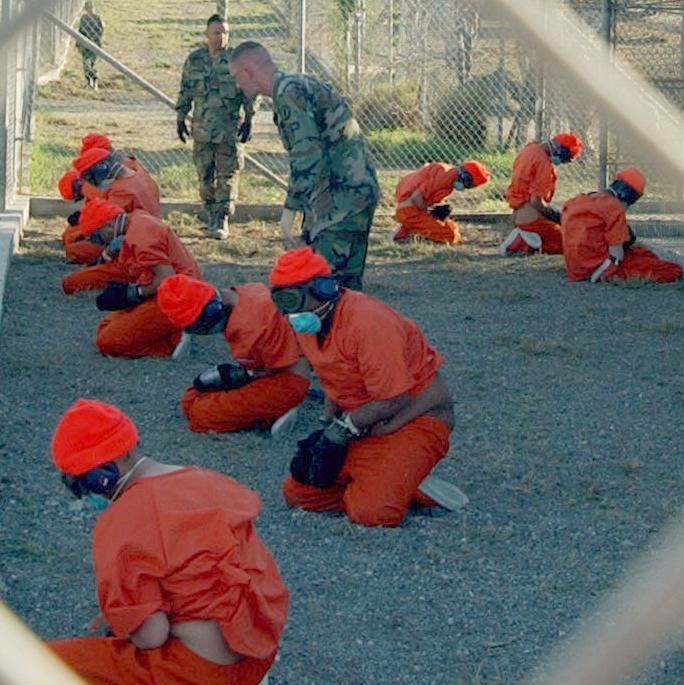 | ||
White torture is a type of psychological torture that includes extreme sensory deprivation and isolation. Carrying out this type of torture makes the detainee lose personal identity through long periods of isolation.
Contents
Iran
In Iran, white torture (Persian: شكنجه سفيد) has been practiced on political prisoners. Most political prisoners who experience this type of torture are journalists held in the Evin prison. According to Hadi Ghaemi, carrying out such tortures in Evin are not necessarily authorized directly by the Iranian government.
It can include prolonged periods of solitary confinement, often in detention centers outside the control of the prison authorities, including Section 209 of Evin Prison.
Ahmed Shaheed, the UN special human rights rapporteur in Iran, mentioned in a statement that human rights activist Vahid Asghari was psychologically tortured by means of long-term detention in solitary confinement, and with threats to arrest, torture or rape of family members. He was also reportedly tortured with severe beatings for the purpose of eliciting confessions.
An Amnesty International report in 2004 documented evidence of "white torture" on Amir Abbas Fakhravar, by the revolutionary guards. According to the report, which called his case the first known example of white torture in Iran claimed that "his cells had no windows, and the walls and his clothes were white. His meals consisted of white rice on white plates. To use the toilet, he had to put a white piece of paper under the door. He was forbidden to speak, and the guards reportedly wore shoes that muffled sound". Upon his arrival in the US, Fakhravar confirmed this report in an interview with Christian Broadcasting Network.
In a telephone call to the Human Rights Watch in 2004, Iranian journalist Ebrahim Nabavi made the following claim regarding White torture:
"Since I left Evin, I have not been able to sleep without sleeping pills. It is terrible. The loneliness never leaves you, long after you are “free.” Every door that is closed on you ... This is why we call it “white torture.” They get what they want without having to hit you. They know enough about you to control the information that you get: they can make you believe that the president has resigned, that they have your wife, that someone you trust has told them lies about you. You begin to break. And once you break, they have control. And then you begin to confess."
Kianush Sanjari, an Iranian blogger and activist who had allegedly experienced this type of torture in 2006 claimed that:
"I feel that solitary confinement—which wages war on the soul and mind of a person—can be the most inhuman form of white torture for people like me, who are arrested solely for [defending] citizens' rights. I only hope the day comes when no one is put in solitary confinement [to punish them] for the peaceful expression of his ideas."
United Kingdom (Northern Ireland)
John McGuffin's book "The Guinea Pigs" details the use of sensory deprivation used in Northern Ireland by the British Army until the UK conviction in 1971 of torture before the European Court in the Hague, later downgraded to "severe maltreatment". This consisted of hooding and dressing in thick boiler suits and being made to stand against a wall on tip-toe and being subject to "white noise". This technique was developed largely in order to avoid accusations of torture (by not inflicting physical pain, but an absence of stimulus) while still providing an interrogation tool. The antecedents of this had been experiments carried out in Canada on volunteers, ostensibly in support of a manned space programme. These had to be discontinued due to the severity of the psychiatric symptoms induced. The UK Government brought together experience of previous torture carried out in various colonial wars - Fort Morbut in Yemen, Hola Camp in Kenya and in Cyprus - in a conference held at Ashford Joint Intelligence Centre in Kent. Photographs taken during the Abu-Ghraib scandal indicate similar techniques being employed by the US Army.
United States
The United States has been accused by Amnesty International and other international human rights organizations of using "extreme isolation and sensory deprivation ... detainees confined to windowless cells ... days without seeing daylight" along with other torture techniques with the approval of the George W. Bush administration. The organization of European Democratic Lawyers (EDL) has explicitly accused the United States of white torture: "Fundamental rights are violated on the part of the United States. In Guantánamo prisoners are held under sensory deprivation, ears and eyes covered, hands and feet tied, hands in thick gloves, held in cages without any privacy, always observed, light day and night: This is called white torture."
Venezuela
According to human rights organizations and other NGOs, the Bolivarian Intelligence Service (SEBIN) of the Venezuelan government holds political prisoners in the lower levels of SEBIN's headquarters, which has been deemed by government officials "The Tomb". The cells are two by three meters that have a cement bed, white walls, security cameras, no windows and barred doors, with each cell aligned next to one another so there are no interactions between prisoners. Such conditions have caused prisoners to become very ill, though they are denied medical treatment. Bright lights in the cells are kept on so prisoners lose their sense of time and the temperature is below freezing, with the only sounds heard being from the nearby Metro Caracas cars. Allegations of torture in La Tumba, specifically white torture, are also common, with some prisoners attempting to commit suicide. Such conditions according to NGO Justice and Process are to force prisoners to plead guilty to crimes they are accused of.
